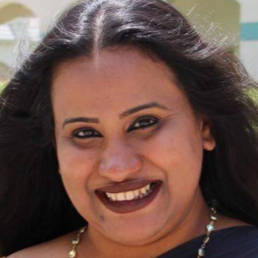International Contract Cheating Project (iCOP)
Project Brief
The presence of essay mills and the rapidly increasing customer base for the same have been an inevitable curse to the modern society. With the proliferation of websites and e-commerce, globally the market for such “contract cheating” actions are too many and too far and wide.
Since the term was coined almost 12 years ago by Lancaster & Clarke (2006), academicians across the globe have shown growing concern over the impact contract cheat can have and continues to have on student learning. Continuous research upon the reasons for this problem and possible remedies have been many. According to recent studies, top universities from UK, USA and Australia have been embroiled in essay mill scandals in recent years, conferring punishments ranging from failing subjects to revoking degrees (Khomami, 2017; Marsh, 2017; Grove, 2017). Most recent studies have gone beyond establishing incidences and have made significant contributions to exploring issues such as attempting to detect contract cheating in assesments (Rogerson, 2018; Dawson & Suther-land-Smith, 2017; Clare, Walker & Hobson, 2017), analysing contract cheating advertisements (Kaktins, 2018) and even exploring contract cheating as an agreement to analyze its legal and ethical rampifications (Tauginiene & Jurkevicius, 2017).
Many studies in literature have recorded cases across the world and are subject to either a specific university or region, cutting down the global measurement of the problem. It is believed a cross-border, multi-campus study using the same set of questions, translated officially where necessary is the need of the hour as this will provide a birds-eye view of the current scenario, what works and what doesn’t.
To date, as far as the authors are aware, one such attempt has been made in the past to develop a survey and conduct a global study. This was the Global Essay Mills Survey (GEMS) that was launched and administered in 2018 (Awdry & Kralikova, 2018). The study aimed to “survey students across Europe, Australasia and the Americas to investigate student self-reported use of essay mills and associated sites/companies… [and] provide an international consideration of the problem of contract cheating as well as comparisons between countries.” Because of several limitations (number of respondents, respondents sample, complicated translations and others) in previous research, we decided to create new project, which is going to avoid the limitations – our goal was to innovate the questionnaire, which is grounded in theory, but keep some similarities for possibility of comparison, keep the strong methodology and collect the high quality data.
Student Questionnaires
Aims and Objectives
The International Contract Cheating Project (iCOP) aims to supplement related research by carrying out studies to investigate the problem of contract cheating across the regions of USA & North America, Europe, Asia, Middle East, Australia and Africa. This will help:
in obtaining statistical evidences of the level of contract cheating in higher education in each of the regions and gain an international perspective about the severity of the problem
to understand the underlying factors that influence students to cheat and the role played by faculties along with policies, and
to compare the obtained results across various regions through studies by the PESTEL and Hofstede factors
Project Team
Research Core Group
- Veronika Krásničan (Mendel University in Brno, Czech Republic)
veronika.kralikova@mendelu.cz - Zeenath Reza Khan (University of Wollongong in Dubai, UAE)
ZeenathKhan@uowdubai.ac.ae (Project Lead)
UAE Campus Leads include:
Dr Christopher Hill, British University in Dubai
Professor Gomathi KG, Gulf Medical University, Ajman
Dr Sreejith Balsubramanian, Middlesex University, Dubai
Dr Steven Glasgow, Herriot Watt, Dubai
Dr Tim Daly, Zayed University
Team Members
- Jana Dannhoferova (Mendel University in Brno, Czech Republic)
- Jefin Joshy (University of Wollongong in Dubai, UAE)
- Salma Sadia Rakhman (University of Wollongong in Dubai, UAE)
Advisory Board
- Tomáš Foltýnek (Masaryk University, Czech Republic )
- Thomas Lancaster (UK)
Project Methodology
Typically, methodologies can have one of three research paradigms as illustrated in Figure 1 below.

Pure qualitative research is exploratory in nature and relies on the collection of qualitative or non-numerical data (such as words, pictures, etc.) that are then used to generate or construct knowledge, hypotheses and grounded theory from data collected during fieldwork (Johnson & Christensen, 2010). Purely quantitative research is confirmatory in nature and relies on the collection of quantitative or numerical data; the research then tests the hypotheses and theory with the collected data (Johnson & Christensen, 2010). Mixed research is both confirmatory and exploratory in nature, involves the mixing of the two pure forms, quantitative and qualitative methods and approaches (Campbell & Fiske, 1959; Glik et al., 1987; Steckler et al., 1992; Fielding & Fielding, 1986).
Researchers suggest that mixing and using different methodologies in one study can in fact compensate for any inherent limitations that may exist in the research methods (Anchin, 2008; Gelo, Braakmann & Benetka, 2008; Lonner, 2009), which can improve the quality of research (Johnson & Turner, 2003). According to Bartholomew & Brown (2012), carefully designed mixed methods can offer very important and valuable tools of investigation to researchers, particularly when studying a wide variety of psychological (Waszak & Sines, 2003), educational (Johnson & Onwuegbuzie, 2004), social (Hunter & Brewer, 2003) and even management factors (Curral & Towler, 2003) which makes it apt for this particular study.
Thus for this study, the methodology adapted is that of mixed method – we will design a survey that will collect data both for quantitative and qualitative study.
Project Instrument
Surveys are non-experimental, descriptive research methods and are useful for studies that cannot directly observe a phenomenon; such as students’ likelihood to e-cheat. According to Babbie (1973), surveys can be used to assess attitudes and characteristics. Crossman states:
‘surveys are commonly used tool[s] in sociological research, whether in the form of a questionnaire, interview, or telephone poll. Surveys make it possible to ask specific questions about many topics and then perform sophisticated analyses to find patterns and relationships among variables’
(Crossman, 2013, p.1)
The survey method chosen for the current research is that of a questionnaire. Questionnaires were specifically used in this study because questionnaires can easily be distributed to large groups of respondents, they were cheap and do not require effort to collect the responses. The answers collected will be standardized and easy to compile and analyze (Crossman, 2013).
According to research, Likert scales tap into the cognitive and affective components of attitudes and helped to measure opinions (McLeod, 2008; Bowling 1997; Burns & Grove, 1997).
A Likert scale, a psychometric scale that was typically used to represent a person’s attitude to something on a scale sometimes of 1 – 5, with
1. = Strongly Disagree,
2. = Disagree,
3. = Neutral,
4. = Agree,
5. = Strongly Agree,
recording either positive or negative responses to a statement will be used (Allen & Seaman, 2007).
So parts of the survey will use Likert scale to collect responses. Some parts will be descriptive in nature and allow respondents to choose from multiple answers provide (these will be provided based on background study).
Chosen Sample
Basha and Harter (1980) stated that ‘a population is any set of persons or objects that possesses at least one common characteristic’. If the population size was quite large, as it was in the current research, then a sample of the population was selected to provide the data necessary
Based on the literature review the target population for this study was HE students, who are expected to be above 18 years of age
To choose the sample size, Sloven’s Formula, adapted from Gomez (2013), was used to determine the required sample size of the students. The formula used was:
n = N / (1 + Ne²) where
n = sample size
N = population size
e = margin of error
This formula allows the researcher to sample the desired population with a desired degree of accuracy (Ellen, 2014). For instance, the total student number at University of Wollongong in Dubai is approximately 4000 and University of Wollongong is approximately 32000. But, the total number of HE students worldwide was 131,000,000 (Maslen, 2012). Using a margin of error of 0.05, the estimated sample size for the study at all universities that wish to participate is about 400 students per campus:

Ethics Approval
This project has been reviewed by the Human Research Ethics Committee at the University of Wollongong, Reference (2019/045). If you have any concerns or complaints about the conduct of this research please contact the Ethics Manager on 02 4221 4457 or email rso-ethics@uow.edu.au.email .






